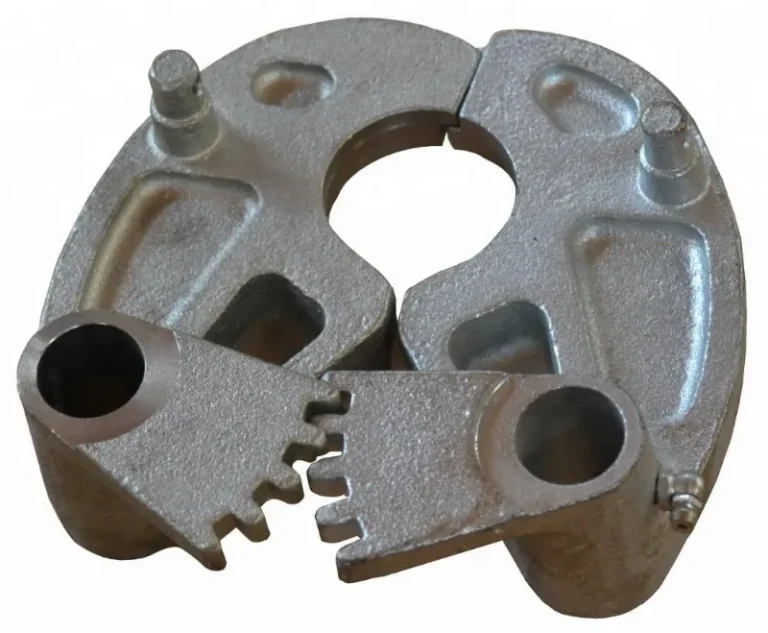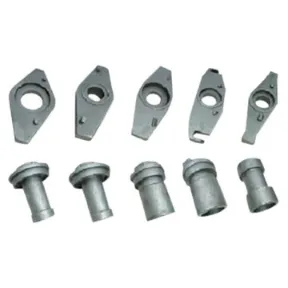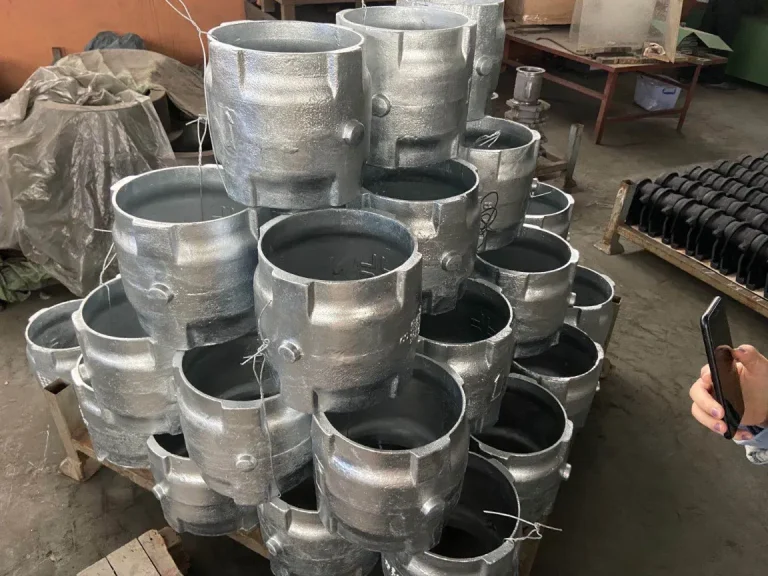Understanding Wing Nuts
What Are Stainless Steel Wing Nuts?
A construction wing nut is a hand-tightened fastener with two protruding wings for quick installation and adjustment in formwork, scaffolding, and temporary structures. Made of galvanized or stainless steel for corrosion resistance, it features coarse threads for easy engagement with standard tie rods and bolts. The wing design allows tool-free operation, ideal for fast assembly and disassembly in tight spaces. Commonly used in applications requiring frequent adjustments, such as concrete bracing and modular frameworks.
Qingdao Baoqi Intelligent Co.,Ltd. with professional technology and equipment, producing high-quality wing nuts will surely make you feel that you get more than you pay for.
Description and Components
A manually operated fastener designed for quick assembly in temporary structures, featuring dual lateral wings for hand tightening without tools. Manufactured from weather-resistant materials like zinc-plated carbon steel or 304 stainless steel, it incorporates deep-cut threads for secure engagement with tie rods and construction bolts.
The wing-to-body ratio is optimized for both torque application and space efficiency in confined work areas. Common applications include adjustable bracing systems, modular formwork, and scaffold joints where rapid installation is prioritized over permanent fastening. The design may include knurled wing edges for improved grip in wet or gloved conditions.
Functionality
Ergonomic Handling – Wing design enables secure grip even with work gloves, improving job site safety.
Speed Adjustment Capability – Permits instant tension modifications during formwork alignment or scaffolding setup.
Weather-Resistant Operation – Remains functional in wet/muddy conditions where tool sockets might slip.
Tactile Torque Control – Provides physical feedback during hand-tightening to prevent joint overloading.
Emergency Compatibility – Functions as backup fastener when power tools or standard nuts are unavailable.
Applications
Modular Formwork Systems – Enables rapid assembly and adjustment of reusable concrete molds.
Temporary Safety Railings – Facilitates quick installation/removal of fall protection systems on evolving structures.
Adjustable Concrete Spacers – Allows precise positioning of rebar mats before pouring.
Tensioning Systems for Fabric Structures – Simplifies periodic adjustment of membrane or tarp tensions.
Emergency Structure Repairs – Provides immediate fastening solution for temporary stabilization of damaged elements.
Advantages of Using Wing Nuts in Assembly
Labor Efficiency – Reduces installation time by 50% compared to standard nuts, accelerating project timelines.
Cost-Effective Maintenance – Eliminates tool replacement expenses with all-hand operation.
All-Weather Reliability – Performs consistently in temperature extremes (-20°C to 50°C) without lubrication.
Error-Proof Installation – Intuitive design prevents cross-threading common with power tool applications.
Inventory Simplification – Replaces multiple specialized fasteners with one universal solution across trades.
Common Wing Nut Dimensions and Their Applications
Wing nuts come in lots of sizes to fit different tasks. The wing nut dimensions include the thread’s width, the thread’s spacing, and the nut’s overall size. Small wing nuts are great for light jobs, like putting together furniture or attaching panels. Bigger ones are perfect for heavy tasks, such as building industrial machines or scaffolding systems. Picking the right size keeps things safe and working well.
Preparing for Installation
Selecting the Right Wing Nut Dimensions for Your Project
Choosing the right wing nut dimensions is super important for a good fit and great results. First, check the size of the bolt or threaded rod you’re using. Make sure the wing nut’s inner thread matches it. Also, think about how much weight the nut needs to hold and where it’ll be used. For example, stainless steel is a smart choice for strong, long-lasting jobs.
Ensuring Proper Thread Compatibility
The threads must match to avoid problems like cross-threading or a loose fit. Check that the bolt and wing nut have the same thread size and spacing. This makes assembly smooth and safe. A good match stops the nut from breaking or failing.
Safety Tips Before Starting the Installation Process
Before you start, look at all parts for damage or wear that could cause trouble. Make sure your hands are clean and dry. This helps you grip the wings tightly while turning. If you’re working high up, like on scaffolding systems, always follow safety rules. This keeps you safe and stops accidents.
Step-by-Step Guide to Installing a Wing Nut Without Tools
Aligning the Components for Assembly
Start by lining up all the parts you want to connect with the wing nut. Make sure holes or threaded spots are in the right place. This makes installation easy. If things aren’t lined up, it’s harder to thread the nut, and the setup might not be steady.
Hand-Tightening the Stainless Steel Wing Nut
Put the wing nut on the threaded rod or bolt. Turn it clockwise with your fingers. Press evenly on both wings to make it snug but not too tight. If you tighten too much, you might harm the threads or other parts.
Adjusting and Securing the Connection
After tightening by hand, check if all parts are held together well. There shouldn’t be any wobbling or gaps. If needed, loosen or tighten the wing nut a bit to make everything secure and steady.
Troubleshooting Common Issues During Installation
Dealing with Misaligned Threads
Misaligned threads can make installing stainless steel wing nuts tricky. The nut might not catch the bolt or rod properly. To fix this, clean all parts first. Dirt or rust can mess up alignment. Look for dents or rough spots on the threads. If you see any, you might need to file them or get new parts. When starting, gently twist the wing nut to help the threads line up. Don’t push too hard. Forcing it can cause cross-threading and ruin both the nut and bolt.
Addressing Tightening Challenges Without Tools
Stainless steel wing nuts are made to tighten by hand. But sometimes, it’s hard to get them secure. If you’re struggling, make sure your hands are clean and dry. This gives you a better grip. You can also wrap a cloth or rubber pad around the wings for extra hold. If you need more strength, try pressing one wing with a small piece of wood while turning the other by hand. This adds force without hurting the nut.
Preventing Over-Tightening or Loosening of Wing Nuts
Tightening too much can strip threads or bend parts. Tightening too little might let the nut loosen later. To avoid this, turn the wing nut until it feels snug and the parts are held tight. Don’t use too much force. Stainless steel is tough, but it can still get damaged if you overdo it. If the setup shakes or moves a lot, check the nut now and then. This makes sure it stays tight.
Maintenance and Care for Stainless Steel Wing Nuts
Cleaning and Preserving Stainless Steel Materials
Stainless steel wing nuts are great because they resist rust and last long. But you need to take care of them to keep them in good shape. Clean them with warm water and mild soap to get rid of dirt and grease. Use a soft brush or cloth to scrub gently. Don’t use rough pads that might scratch the steel.
For tough stains or early rust, mix baking soda with water to make a gentle cleaner. Rub it on, then rinse well with clean water. Dry the nuts completely to stop water spots or rust. If the nuts are used near saltwater or chemicals, add a protective layer. You can use silicone spray or special stainless steel polish to keep them safe. Store the nuts in a dry place when not in use. Check them often for wear or damage. Replace any bad ones to stay safe.
Frequently Asked Questions
What causes misaligned threads during installation?
Misaligned threads happen when dirt, rust, or damage is on the bolt or nut threads. Clean everything well and check for problems before starting. This helps avoid trouble.
How can I achieve a secure fit without over-tightening?
Turn the wing nut until the parts are snug and don’t move. Use gentle pressure. Don’t twist too hard to avoid stripping the threads.
Are there special care requirements for stainless steel wing nuts used outdoors?
Yes, clean them often with mild soap. You can also add a protective coating, like silicone spray. This keeps them safe from rust outdoors.
Can I use tools on stainless steel wing nuts if needed?
They’re made for hand use, but you can carefully use tools like pliers for extra strength. Be gentle to avoid damage. It’s best to stick to hand-tightening when possible.
For high-quality fastening solutions like stainless steel wing nuts tailored specifically for your projects, Qingdao Baoqi Intelligent Co.,Ltd. offers customization services backed by over 10 years of expertise with ISO-9001 certified facilities.

.webp)








